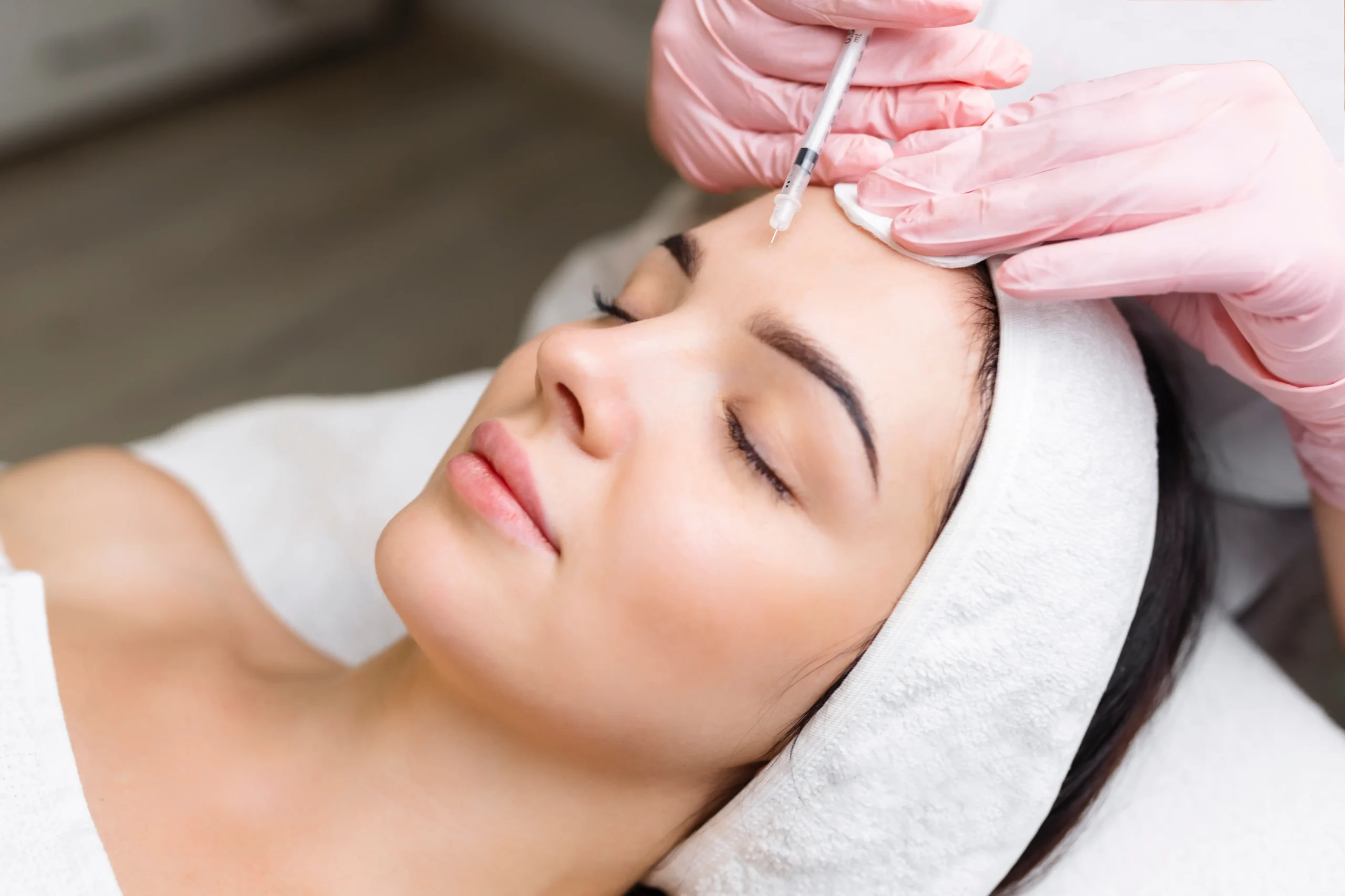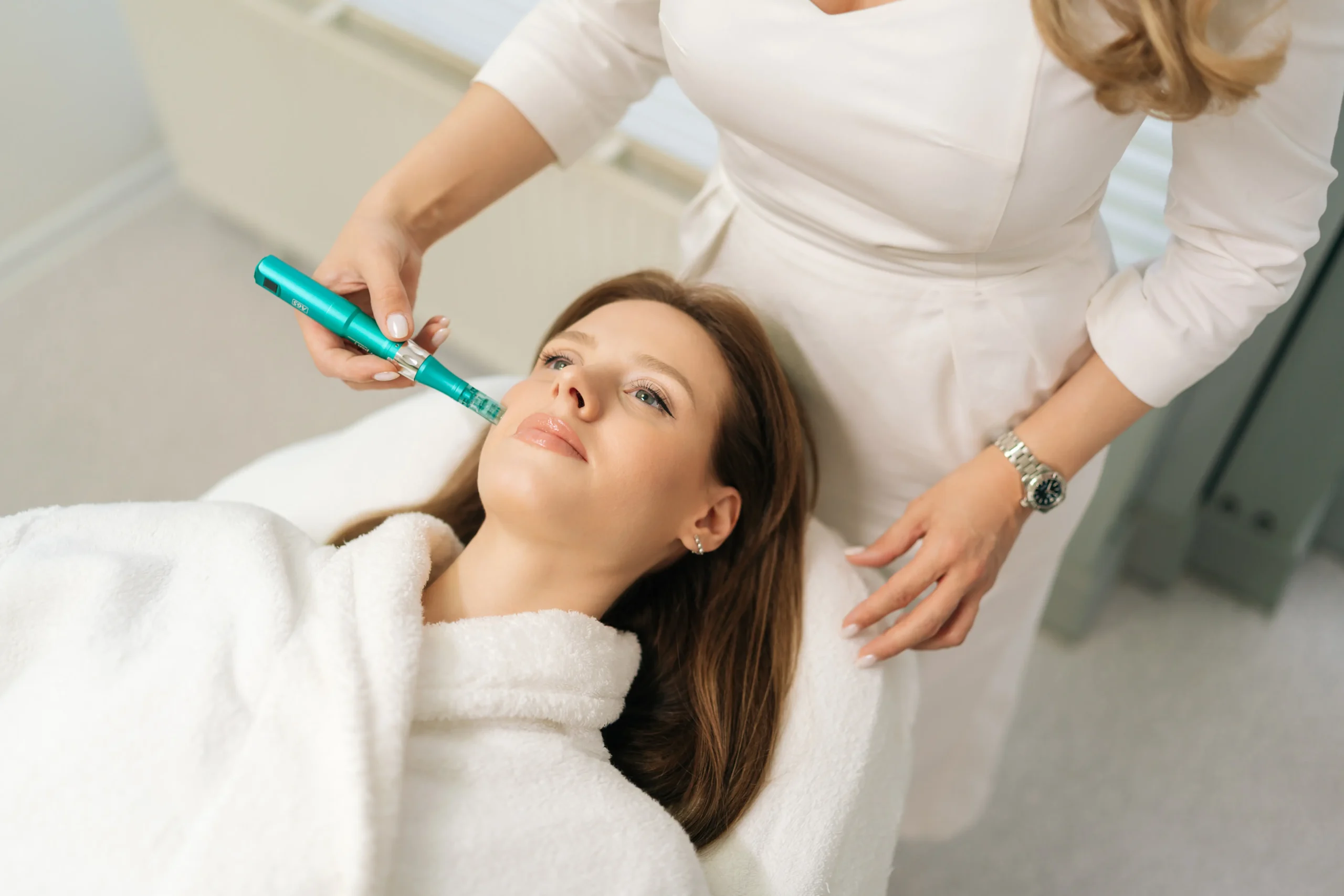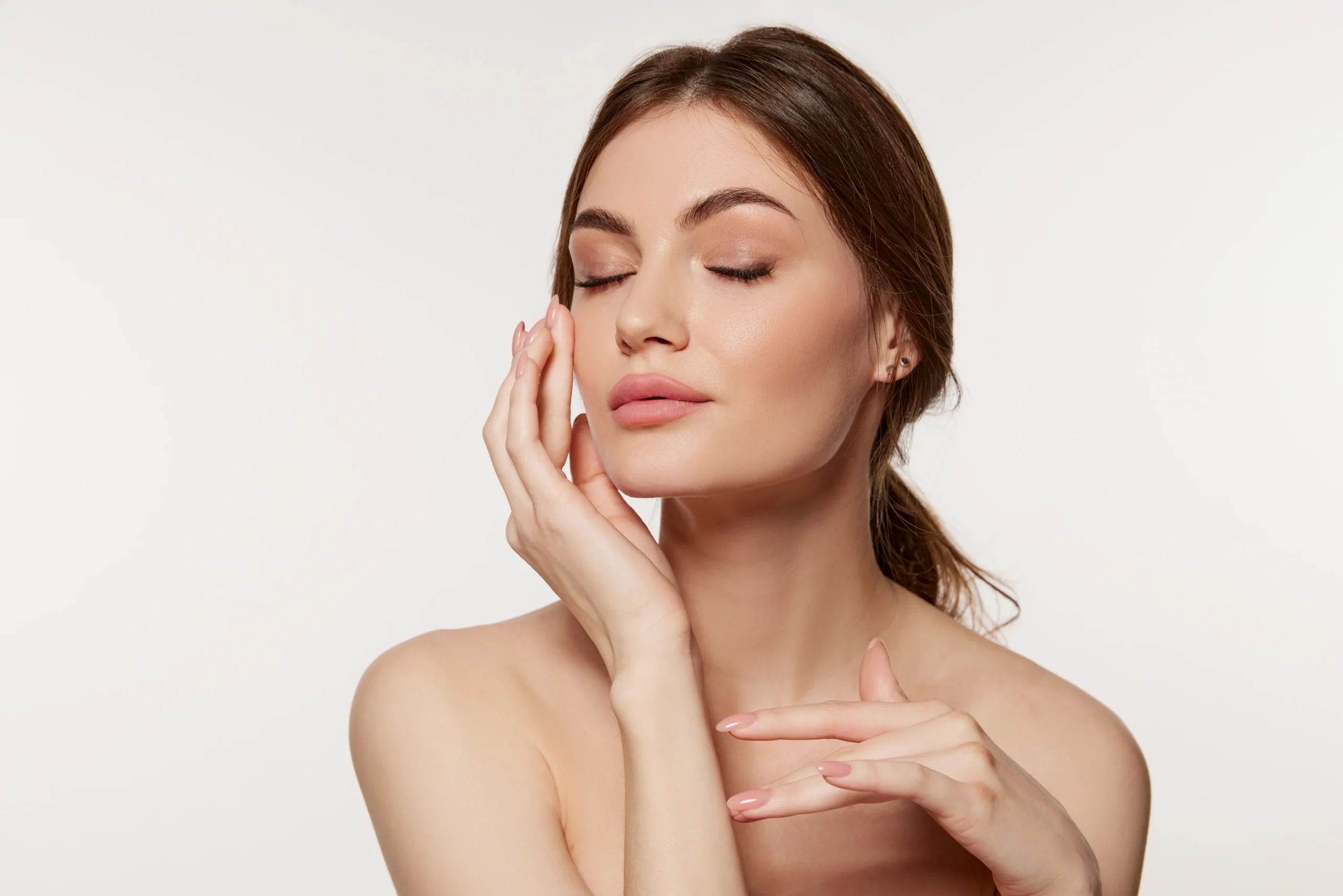Written by Rosalie Orrostieta, MSN, APRN, FNP-C
Medically Reviewed for Accuracy and Safety by Rosalie Orrostieta, MSN, APRN, FNP-C
Last Updated: September 27, 2025
I’m Rosalie Orrostieta, the founder of one of the best medical spa in Sarasota. My world revolves around the art and science of health and beauty, and in my practice, I get to talk with amazing people every single day.
Of all the questions I’m asked, one pops up more than any other. It’s usually whispered, almost like a confession:
“Rosalie… what happens if I stop getting Botox?”
I had a client just last week, a wonderfully vibrant woman who was considering her first treatment. “I’m just so worried,” she told me, “that if I try it and then stop, I’ll suddenly look ten years older. Am I going to look like a melted candle?”
I get it. This is, without a doubt, the number one fear that holds people back.
So let’s clear the air right now, let me give you the short, reassuring answer you’re looking for: No. Absolutely not.
Your wrinkles will not come back worse. Your face will not “collapse.” You will not suddenly age overnight.
In fact, after years of treatment, you might even find that your lines are softer than they would have been if you’d never started at all.
Botox is the most popular non-surgical cosmetic treatment in the world for a reason. The American Society of Plastic Surgeons (ASPS) reported that neuromodulator injections (like Botox) saw a 6% increase in 2023 alone, with millions of procedures performed. It’s a trusted, effective treatment.
But a good relationship with any treatment, just like a good relationship with a person, is built on honesty and trust, not fear.
So, let’s set the fear aside and have a real, honest conversation. Let’s talk about what really happens to your muscles, to your skin, and even to your mind when you decide to take a break from Botox.
Myth vs. Reality: Will My Wrinkles Actually Get Worse?
Let’s tackle that big, scary myth head-on. The idea that stopping Botox causes “rebound wrinkles” or accelerates aging is completely false. It’s a misconception based on a simple misunderstanding of what Botox actually does.
Here’s the simplest way I explain it to my clients:
Botox (or any neuromodulator like Dysport or Xeomin) is not a filler. It doesn’t “prop up” your skin or fill in a wrinkle. Think of fillers (like Juvéderm or Restylane) as the “scaffolding” that adds volume back to an area.
Botox, on the other hand, is a “muscle relaxer.” It works by temporarily and I want to really stress that word, temporarily blocking the nerve signal that tells a specific muscle to contract.
When that muscle can’t contract (or can’t contract as hard), the skin on top of it doesn’t crinkle. Your “11s” (the lines between your brows) don’t deepen when you frown. Your crow’s feet don’t etch in when you smile.
Botox is not a permanent solution. It’s a “pause button.”
I always tell my patients to think of it like this: Imagine you’re watching a movie, and you press the pause button. The image on the screen freezes. Ten minutes later, when you press “play” again, what happens? The movie just picks up right where it left off. It doesn’t suddenly fast-forward to the end and look all distorted, right?
Your face is the same. When you stop getting Botox, you are simply pressing “play” on that muscle’s movement again. The natural aging process gracefully resumes, right from where it left off.
There is no “rebound.” There is no “backlash.” There is only a gradual, gentle return to your natural state.
The “Rewind” Process: A Timeline of What to Expect
| Timeframe | What’s Happening to the Muscle | What You’ll See in the Mirror |
| Month 1-2 | Nerve signals are fully blocked. | Peak effect. Smooth skin, minimal movement. |
| Month 3-4 | Nerve signals begin to reconnect. | A gradual, “soft” return of movement (“flicker”). |
| Month 6+ | Nerve signals are fully restored. | A complete return to your original baseline movement. |
Okay, so you’ve had your last injection. What happens next? It’s not like you wake up one morning and poof, it’s gone. The process is incredibly gradual. I see it on myself all the time!
Here’s a realistic timeline of what I call the “gentle thaw.”
Immediately After (First Few Weeks)
For the first few weeks to two months after your last injection, nothing happens. You are still enjoying the peak effects of your treatment. Your muscles are relaxed, your skin is smooth, and all is well.
Month 2-3: The Gradual “Thaw”
This is when the effects slowly begin to wear off. For me, the very first sign is what I call a “flicker.” I’ll go to raise my eyebrows in the mirror, and I’ll see a tiny, soft bit of movement that wasn’t there a week before.
It’s subtle. You’ll start to notice you can make some expressions again, but they’re still soft and dampened. The muscle is slowly “waking up” as those nerve signals start to find their way through again.
Month 3-4: Movement Returns
This is the average duration for a Botox treatment. By this point, you’ll likely have significant, if not full, movement back in the treated areas.
You can make that full “surprised” face in the mirror again. You’ll see those dynamic wrinkles, the lines that only appear when you’re expressing, start to show up again. This is totally normal. It’s just your muscles saying, “Good morning! We’re back to work.”
Month 6+ and Beyond: Back to Your Baseline
By the six-month mark, your Botox has typically been fully metabolized and cleared by your body. The muscles have regained their full, original strength.
Your face has now returned to its natural “baseline” which is how it looked before you started treatment.
The Long-Term Benefit: Why Your Wrinkles Might Actually Look Better
Here is the part that truly excites me as a provider and as a health and beauty enthusiast. For many people, especially long-term users, “baseline” doesn’t mean what they expect.
You don’t just go back to the face you had five years ago. You go back to a face that has been protected for five years.
Think of it this way: If you wear a seatbelt, it’s not doing much when the car is parked. But when you get in an accident, it holds you in place and prevents injury. Botox is a seatbelt for your skin.
1. The “Muscle Re-Training” Effect
This is my favorite part. Your brain and muscles are incredibly smart. If you are physically prevented from making an aggressive frowning motion for several years, your brain… well, it kind of forgets how!
I see this every day in my Sarasota practice. I have clients who’ve been with me for years, and they’ll come in and say, “Rosalie, it’s weird. I try to make my ’11s’ now, even when my Botox is worn off, and I just can’t do it with the same force.”
That’s the magic. They have literally untrained the subconscious, habitual expression. By relaxing the “frown” muscles, we often end up strengthening the “lifting” muscles around them. You’ve broken the habit.
2. You’ve Prevented Lines from Being “Etched”
Wrinkles form like a piece of paper you fold over and over. The first fold is faint. The hundredth fold is a deep, permanent crease that won’t go away.
Botox stops you from making that fold.
For the 3-4 months your treatment is active, you are not folding that paper. You are not etching those lines deeper. So, if you used Botox consistently from age 35 to 40, you have effectively skipped five years of “wear and tear” on that part of your face.
When you stop at 40, you won’t have the wrinkles of a 40-year-old. You’ll have the skin of a 40-year-old who just started developing those expression lines.
This is why I often call Botox a “time capsule.” You are simply pausing the aging process for those specific lines. When you stop, you resume aging from the point you paused it, not from an accelerated-aging point.
The Science: What Really Happens to Your Muscles Long-Term?
Patients often ask, “But does it damage the muscle? I’ve heard the word ‘atrophy.'”
Let’s clear this up. That word, “atrophy,” sounds terrifying, but it’s not as dramatic as it sounds.
“Disuse atrophy” is a medical term that simply means a muscle gets smaller and weaker when it isn’t used. It’s the exact same reason an arm in a cast looks a little smaller when the cast comes off. The muscle isn’t damaged, dead, or “gone”, it’s just been resting.
In fact, a 2020 systematic review confirmed what we’ve known in practice for a long time: repeated Botox injections can cause muscles to weaken on a cellular level.
But here’s the key: it is reversible.
Once you stop injections and that muscle starts contracting, moving, and “working out” again, it gradually regains its original strength and size.
In aesthetics, we often use this temporary “atrophy” as a wanted effect!
When I treat a client who grinds their teeth (bruxism) or wants a slimmer jawline, I inject Botox into their masseter (jaw) muscle. By relaxing this big, bulky muscle, we intentionally cause it to shrink slightly. This relieves their pain and creates a softer, more V-shaped jaw.
When they stop treatment, that muscle will eventually (over many months) build its strength right back up.
So, no, you are not “destroying” your facial muscles. You are simply giving them a well-deserved, temporary vacation.
The Psychological Adjustment: Getting Reacquainted with Your Face
Now, let’s have some real talk. As your provider and friend, this is the part I want to be most honest about.
The science is simple: your face will return to its baseline. But the psychological part can be a little more complex.
I’ll be the first to admit it: I love the feeling of my smooth forehead. I’ve gotten used to it. On the rare occasion I go well past my own “due date” for treatment, I’ll catch myself in the mirror, raise my brows, and see those lines… and there’s a definite moment of, “Whoa. There you are again.”
It’s not that I look bad. It’s not that I look “old.” It’s just that I’m not used to seeing those lines anymore.
When you’ve seen a smooth, line-free reflection for years, it can be a mental adjustment to get reacquainted with your natural, expressive face. This is the “rebound” people sometimes think they’re seeing. They haven’t suddenly aged, they’ve just forgotten what their normal expression lines looked like.
It’s like getting used to your natural hair color after dyeing it for a decade. It’s still you. It’s still beautiful. You just have to give yourself a moment to get reacquainted.
So, You’ve Stopped Botox. What’s Next? (How to Maintain Your Skin)
If you’ve decided to take a break for pregnancy, for financial reasons, or just because it doesn’t mean you’re left with no options. As a health and beauty expert, this is where I get to preach the gospel of good skincare!
If Botox is the “pause” button, these are the “protect” and “repair” buttons.
- The Non-Negotiable: Sunscreen. If you do nothing else, do this. Sunscreen is the #1 way to prevent new wrinkles and protect your skin. I’m talking a broad-spectrum SPF 30 or higher, every single day, rain or shine.
- My “Holy Trinity” of Topicals:
- Retinoids (Retinol, Tretinoin): This is the gold standard for stimulating collagen production and speeding up cell turnover. It’s the most proven topical ingredient for reducing the appearance of fine lines.
- Vitamin C: This is your morning “antioxidant shield.” It protects your skin from environmental damage (like pollution) that breaks down collagen.
- Peptides: Think of these as little “messengers” that tell your skin to build more collagen and elastin, helping to keep it firm.
- In-Office Alternatives: Of course, Botox isn’t the only tool in our toolbox. If you’ve stopped it but still want to support your skin, you can explore:
- Microneedling: To create a powerful, natural collagen-building response.
- Laser Treatments: To resurface the skin and improve texture.
- Dermal Fillers: To address volume loss (which Botox doesn’t treat) in areas like the cheeks or under-eyes.
My Final Thoughts: Your Face, Your Choice
Here is the most important takeaway I can leave you with: The choice to start, stop, or pause Botox is 100% yours.
It is a powerful, effective, and incredibly safe medical treatment, but it is not a “forever” contract you are locked into.
- Myth Busted: Stopping Botox will not make your wrinkles worse.
- What to Expect: Your face will gradually and gently return to its pre-treatment baseline over 3-6 months.
- The Good News: You’ve likely benefited from a powerful preventative effect, meaning your returning wrinkles will probably be softer than you expect.
- The Science: Any muscle weakening is temporary and reversible.
This philosophy of education and empowerment is exactly why I founded Rose Medical Aesthetics. My passion, and our entire practice’s mission, isn’t about “changing” you or locking you into a lifetime of treatments.
It’s about being your partner in health and beauty.
It’s about giving you the most advanced, expert care in a place that feels safe and supportive. Whether you’re getting treatments every three months like clockwork, or you’re taking a three-year break to focus on other things, we are here to support that choice.
So please, let go of that fear. Your face is resilient, and it will not betray you. And if you ever want to chat about it, you know where to find me.



